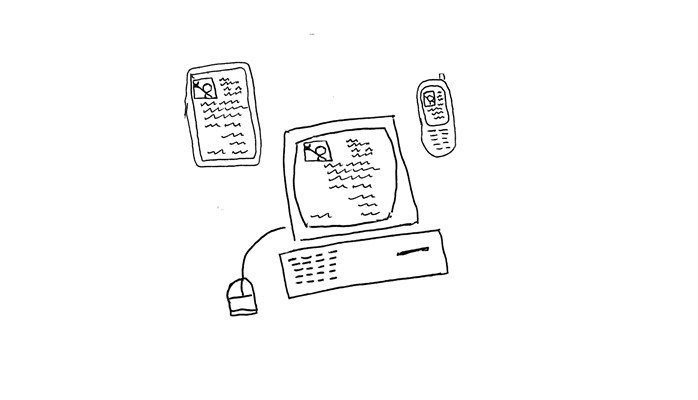
Everything Old is New Again: Big Fat Phones & QuickBooks in the Cloud
originally published on my blog
Every year that passes leaves some reminder of the time – some person or occurrence which touches us and creates a lasting memory. 2014 delivered its share of memorable people and moments and proved again that social platforms such as Twitter and Instagram have become increasingly significant as people across the world organize, march or call for change. Yet even as change is demanded from us and often forced upon us, it is wise to remember that the pendulum eventually swings both ways. We want to have our cake and eat it, too, which is the ultimate no-win situation and causes us to constantly and consistently seek out the alternative. Like the puppy chasing his tail, we end up going round in circles. Harem pants and jeans torn from knee to thigh have come back in fashion, and even though they didn’t really work the first time, here they are again. It is inevitable.
Information technology trends follow similar patterns, and what was once in high fashion may now be considered as “legacy”. Perhaps the better word is “classic”, as these legacy solutions often represent the standards by which new solutions will be measured. Eventually, the properties of the classic or legacy solution wind up in the new breed, because this is what the market has come to expect and/or demand. Even when entirely new standards are believed to be adopted, the truth is that years of learning and experience will often find the path previously traveled by others to be the right path.
It seems like so long ago when some said “the desktop is dead” and that all applications would be used by every device via the web, but not run on the device. Well, there are quite a number of web-based applications and services delivered in just that manner, but there are also lots and lots of computers out there with software still installed on them, happily working away for their users (there’s an app for that, right?). The desktop isn’t dead at all, it seems, and what’s more – there are trends to extend the capability and reach of the desktop to the web rather than replacing the desktop with the web. Application integration, process integration, interoperability, functionality and modality – all these factors and more have become the underlying drivers for extension of and hosting for desktop applications, and are the areas where SaaS and web-based application service has not delivered as expected.
The idea of having no software on the computing device is kind of silly, when you think about it. Computers continue to get more powerful and have more capability than ever. Heck, even phones are getting fatter and bigger again. The best phones these days are the ones that rival tablets and laptops in size and have lots of apps to run.
Microsoft Office, too, hasn’t gone anywhere, really. It’s still firmly attached to most workstations whether they’re iPads or Macs or Windows systems. Web-based productivity tools are certainly gaining in use, but not nearly as widely as some would believe. Office productivity continues to live on the desktop, and ties many users to desktop computing for that very reason. Use CRM in the cloud? I’ll bet you still export data to Excel or Word on the PC. Use accounting in the cloud? A lot of reporting still goes through Excel, trial balance systems and the like. The universe of web-based and SaaS apps is getting larger, but it hasn’t yet become the center of the universe for most established businesses. Net-new customers and smaller businesses are adopting SaaS due largely to cost and to the success of the marketing message, but use and direct experience with the product applied in the business setting often demonstrates that adoption of a more flexible (malleable) or functionally rich solution is indicated. The business likes the mobility, remote access and managed service, but not the actual SaaS application. So, hosting becomes the better alternative and the business is able to use the software that works for the business, and use it in a manner that allows the business to take advantage of remote and mobile capability, subscription service, and more.
I really have no gripes with web-based and SaaS solutions. In fact, some of my best friends use SaaS :) The message I’m trying to convey is simply that, regardless of what the media and marketing may tell you, things don’t always change as quickly as it seems. Yes, there is a movement towards cloud solutions and online working models. Yes, there is change in how information technology is obtained and used. And equally true is the reality that only a portion of the market has adopted these changes and new philosophies. By the time there is “complete” adoption, there will be a new standard or approach being marketed and we will be in this place once again. Is there wide recognition of the benefit for mobility and remote capability? Sure there is, but it is also accompanied by the understanding that tried and true solutions will continue to deliver the functionality and capability businesses rely upon, even as new models for delivering them come about.
Make Sense?
J
